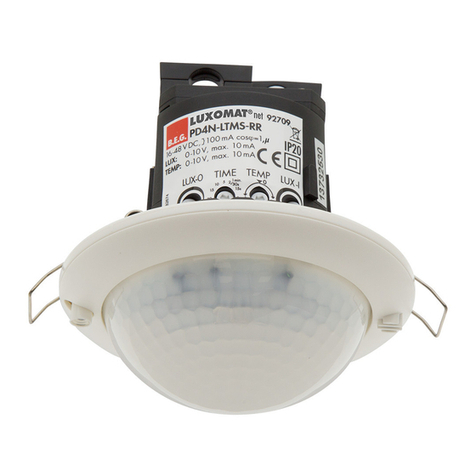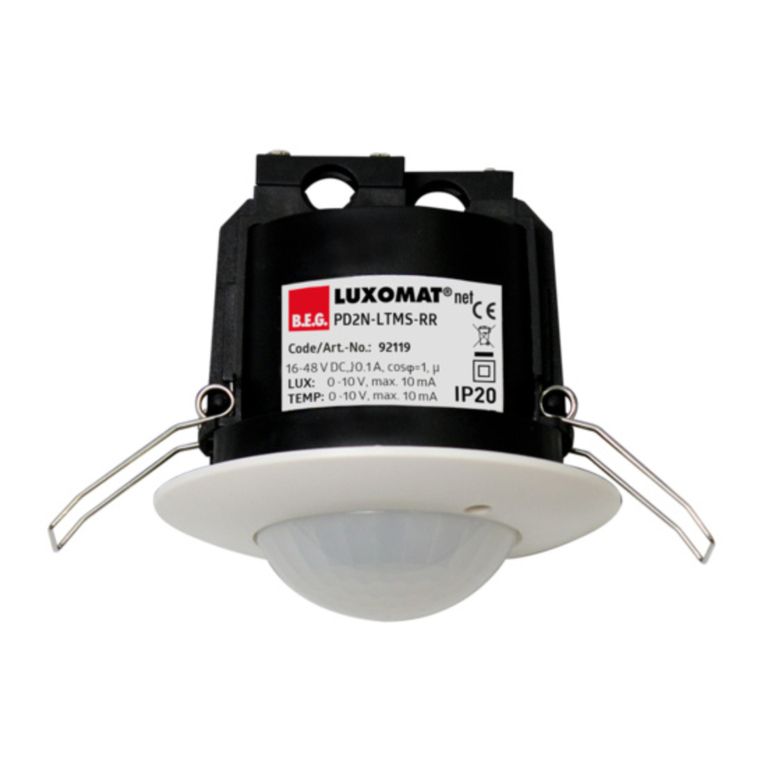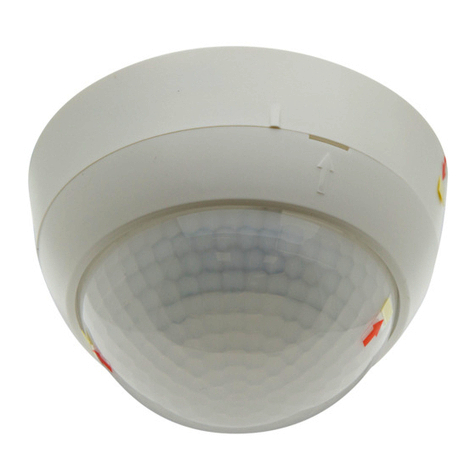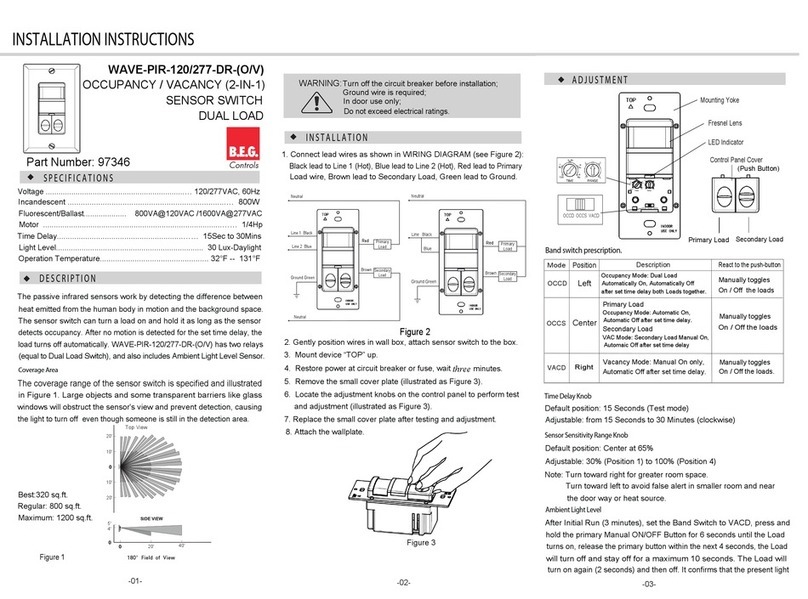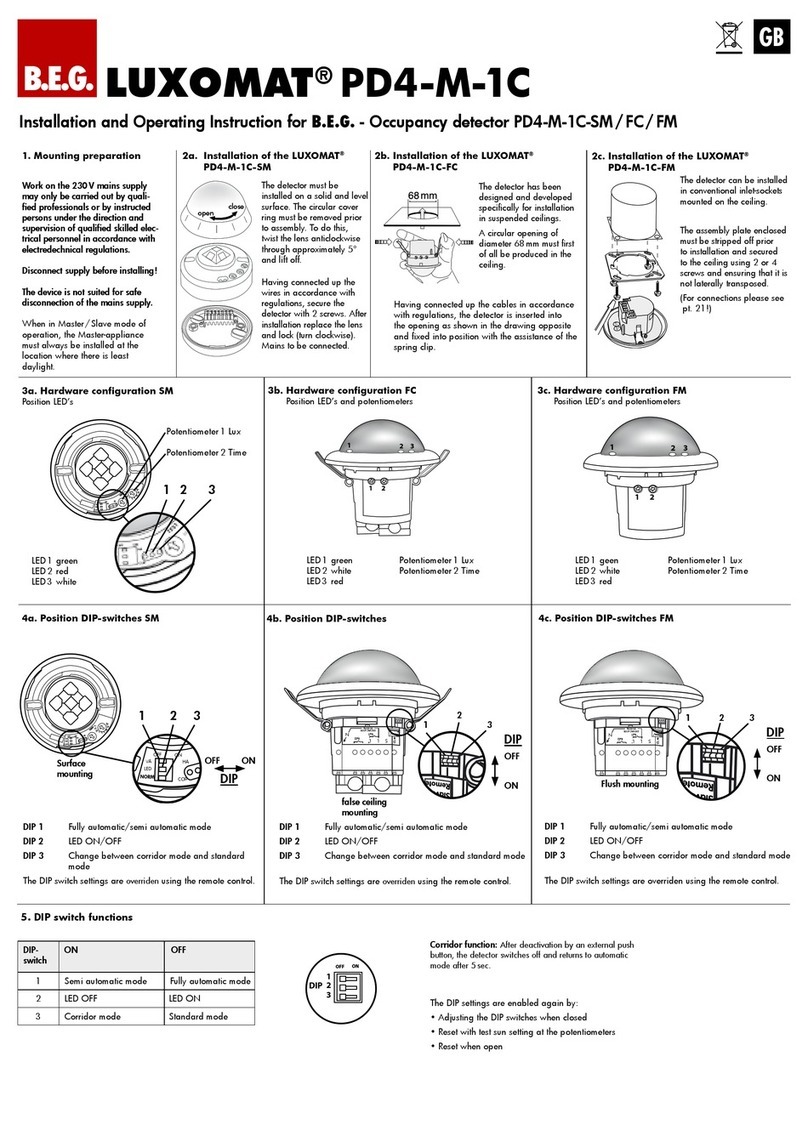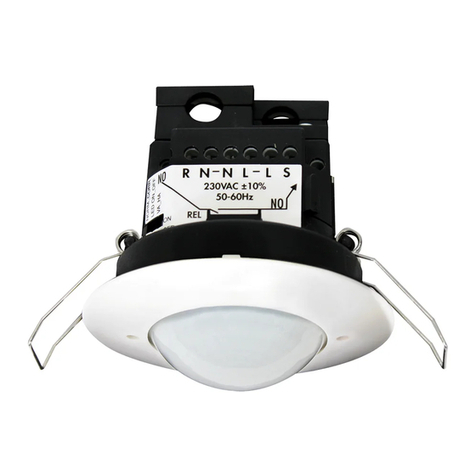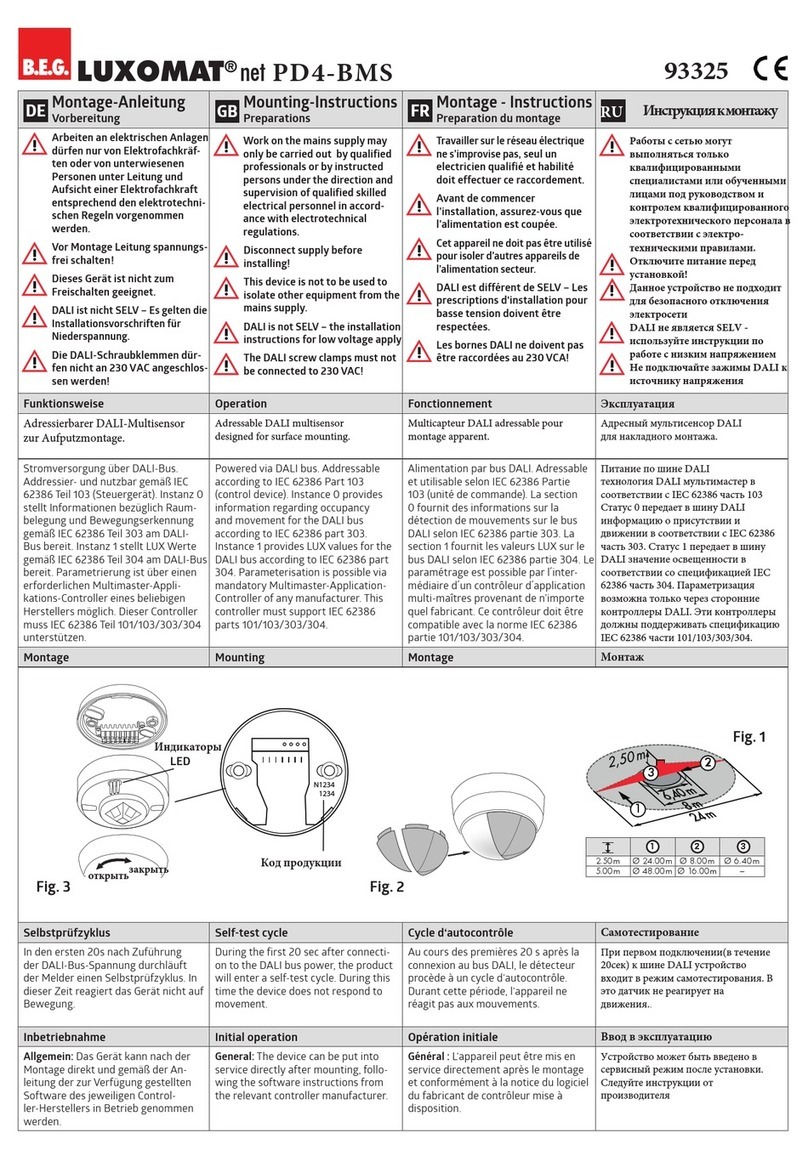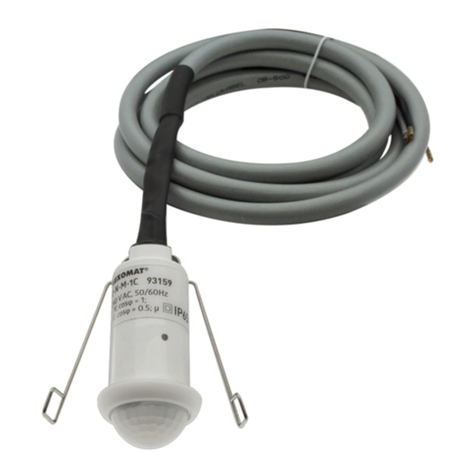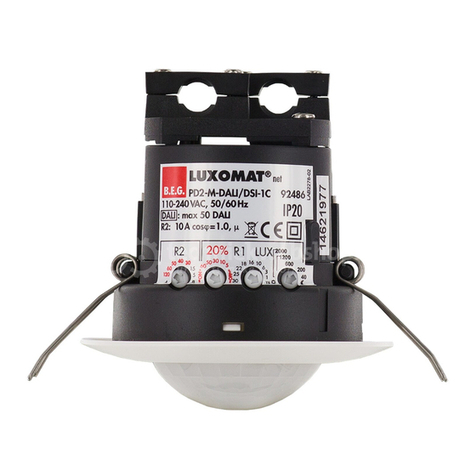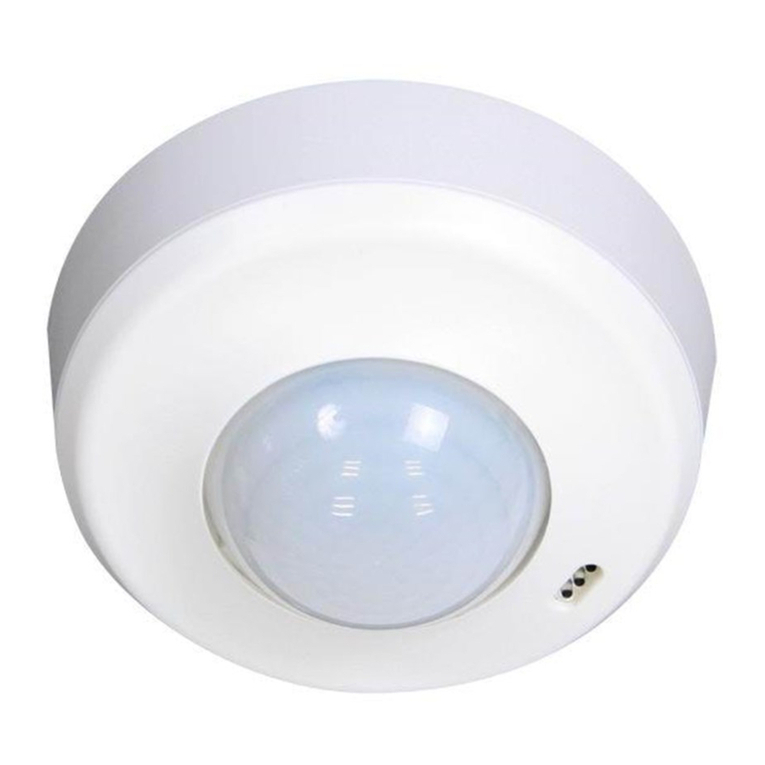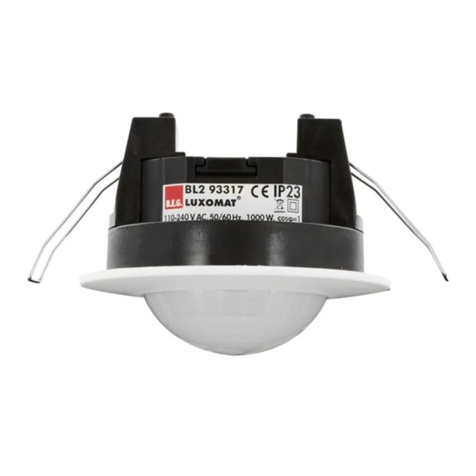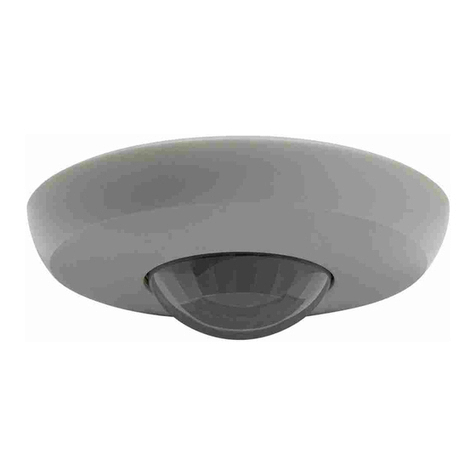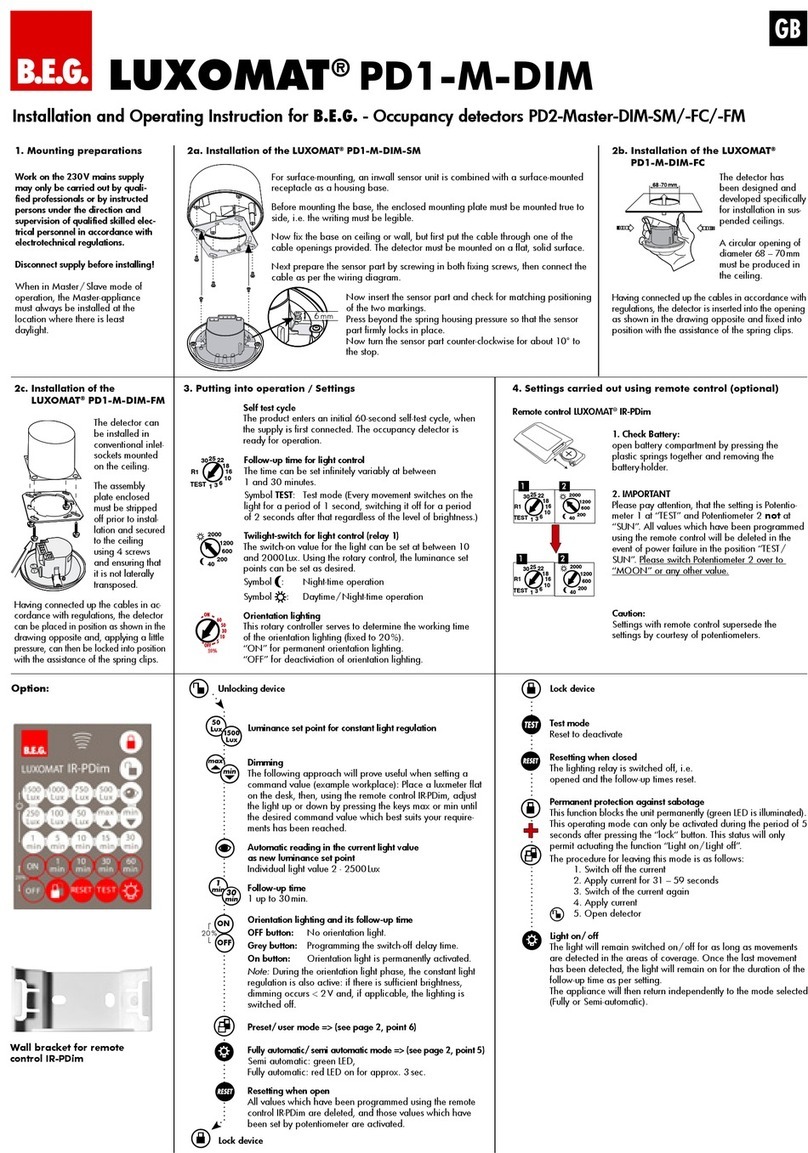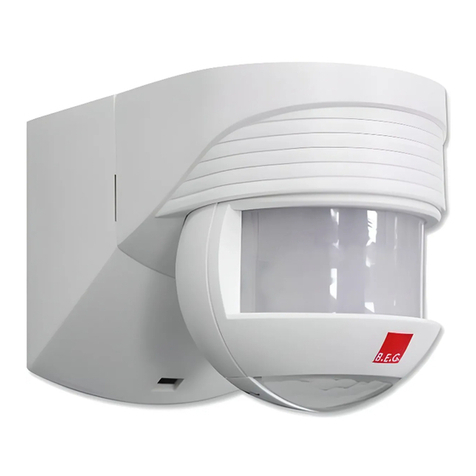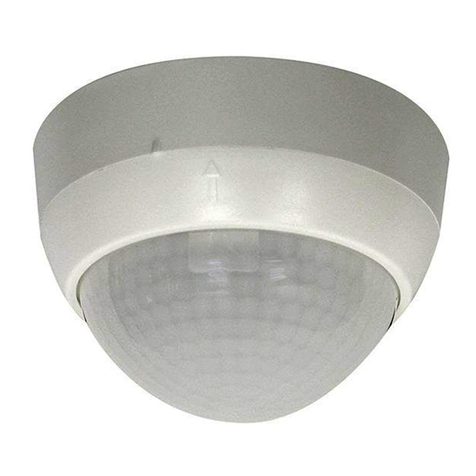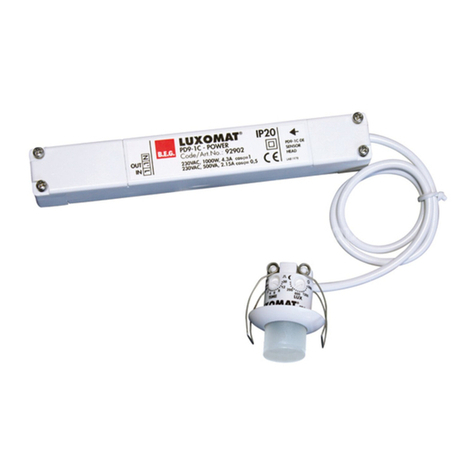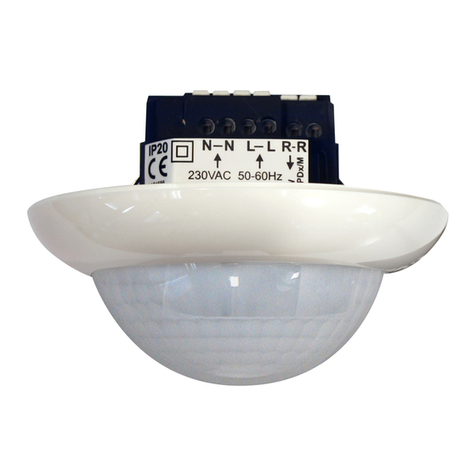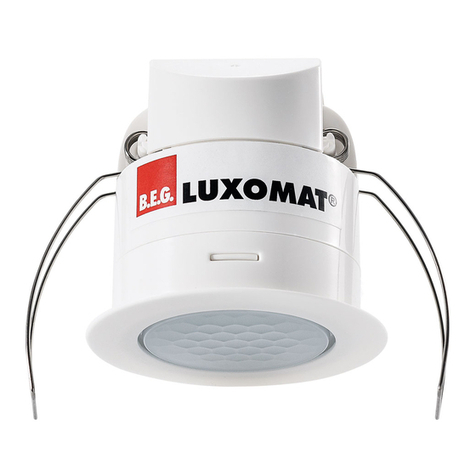
11. Key functions in closed state
Light ON/OFF during the detection of
motion plus follow-up time;
Activation of the 12 h-ON/OFF-
function by holding down the push
button
Switches channel off and is immedi-
ately active again, exits all timers,
interruption of light measurement
Permanent protection against sabotage
This function blocks the unit perma-
nently. This operating mode can only be
activated during the period of 5 seconds
(white LED flash) after pressing the “lock“
button. The procedure for leaving this
mode is as follows:
1. Switch off the current
2. Apply current for 31 - 59 seconds
3. Switch off the current again
4. Apply current, wait for selftest
cycle
5. Open detector
Activation/Deactivation of the test function
After 3 minutes the test mode will be
automatically closed.
Changes to “open“ state
Conrmation
t < 5 s
12a. In the initialisation period
12 h Light ON/OFF (party function)
Activated by “Light“ - push button
Deactivated by “Reset“- push button (default)
Corridor function (see pt. 14a)
Activated by “outside“- push button
Deactivate by “inside“- push button (default)
Forced shutdown (see pt. 14c)
Activated by “sun“ - push button
Deactivate by “moon“- push button (default)
12b. In opened state
This push button opens the detector and the following
functions can then be programmed.
Attention: The detector is closed automatically:
• after every voltage recovery
• after 3 minutes
Change between fully automatic and semi automatic
mode (HA) see pt. 17
Adjustment twilight-switch
Night operation
Day operation/ Night operation
The state changes to “closed“.
In the first 5 seconds, the white LED flashes every 0.5
seconds. During this time, sabotage protection can
be activated.
The device distinguishes between 2 procedures:
• Reading in with lighting switched on:
The switch-on value is determined automatically.
Determining the switch-on value:
1. Press the “eye“ push button
2. Switch off the light (2 seconds later)
3. Read in the brightness
4. Switch-on value = Read brightness
• Reading in with lighting switched off:
When the push button is pressed, the current
brightness is specified as the switch-on value. The
switch-off value is determined automatically.
• Setting a fixed switch-on value:
If the brightness has been modified, the switch-off
threshold is recalculated.
Each time the push button is pressed, the device
increases the current switch-on value in increments of
20 lux for a current switch-on value of < 100 lux and
in increments of 50 lux for a current switch-on value
of > 100 lux.
1000
Lux
20
Lux
Standard sensitivity for most applications
Reduced sensitivity for outdoor applications
When the pulse function is active, a pulse of 1sec. is generated
every 9 sec. If the pulse function is activated via remote control,
the pause between 2 pulses can be modified. After activating
the function via the “Pulse“ push button, select the desired time
within 5sec.:
5
min = 9 sec.,
10
min = 10 sec.,
15
min = 15 sec.,
30
min = 30 sec.
The “Test“ push button can be used to set the LED ON/OFF
function. To do this, hold down the push button for 3 sec.
Please note that in the open state and in test mode, the LED
indicators are always ON.
Twilight switch function (CdS)
If the CdS function is active, the detector acts as a simple twilight
switch. Only the brightness can be set in this mode. Movements
are no longer indicated by the red LED.
Push button acknowledgement:
Each push of a button is indicated by lamp acknowledgement
and by the white LED.
“Light ON“ status: OFF/ON (approx. 0.5sec. each)
“Light OFF“ status: ON/OFF (approx. 0.5sec. each)
+
PI R
CdS
12. Explanation of the remote control button functions
10.
Settings with remote control IR-PD-1C in opened state
Unlocking device - Activation
of the programming mode
Locking device - Exit programming mode
If there is not reaction for about 3 minutes the
programming mode will be deactivated.
Change between fully automatic
and semi automatic mode (HA)
Luminance set point 20 - 1000 Lux
Automatic reading in the current
light value as new luminance set
point
Change between motion detec-
tor and photo electric switch
Increase the current light level by
20 resp 50 Lux
Light ON/OFF
HA
ON/OFF
Resetting when
open
: Deletes all
values set with
the remote con-
trol, light OFF.
Potentiometer
and DIP switches
are enabled for
setting.
or
1000
20 to
+
Follow-up time
5 - 30 min. or impuls
to
LED ON/OFF (by holding
down the push button)
to Detection sensitivity reduced
or normal
5
min
Daytime operation, detector only
activated by motion
or
PI R
CdS
t < 5 s
Permanent protection against sabotage
White LED ashes
when choosing CdS
1. If the switch-on threshold has been modified by the potenti-
ometer or remote control, the switch-off threshold stored in
the EEPROM is deleted and is then recalculated on the next
activation.
Determining the switch-off value
1. Switch on for 5 min. with dark and motion
2. Light OFF for 2sec.
3. Internal calculation of the switch-off value
2. If the eye push button is pressed, the switch-off threshold
is recalculated. See also Remote control–> Eye section
3. Switch-off delay
If the determined switch-off threshold is exceeded during
operation, the detector only switches off after a delay of ap-
prox. 15 minutes. This compensates for any brief fluctuations
in the brightness.
13. Switch-off threshold brightness
A long button press is supported by devices in master
configuration.
The “Corridor“ and “Light ON/OFF“ functions are mutually
exclusive. If both are activated, the detector performs the
corridor function.
The behaviour when the push button is pressed is defined
as follows:
Corridor function activated
Light ON:
Push button pressed briefly: Light OFF -> Active again after 5 sec.
Push button held down: Light OFF -> Active again after 5 sec.
Light OFF:
Push button pressed briefly: Light ON as long as motion + Lag
time
Push button held down: Light ON as long as motion + Lag time
14a.
Behaviour of external push button/IR “Light“
12 h Light ON/OFF activated
Light ON:
Push button pressed briefly: Light OFF -> Active after 5 sec.
Push button held down: 12 h OFF
14b. Behaviour of external push button/IR “Light“
Forced shutdown active
Light OFF:
Light OFF: Push button pressed briefly: Light ON for approx.
30min., then forced shutdown if the set brightness is still
exceeded.
14c. Behaviour of external push button/IR
“Forced shutdown“
Light OFF:
Push button pressed briefly: Light ON as long as motion + Lag time
Push button held down: 12 h ON
12 h Light ON/OFF deactivated
Light ON:
Push button pressed briefly: Light OFF as long as motion + Lag
time
Push button held down: Light OFF as long as motion + Lag time
Light OFF:
Push button pressed briefly: Light ON as long as motion + Lag time
Push button held down: Light ON as long as motion + Lag time
HA
ON/OFF

